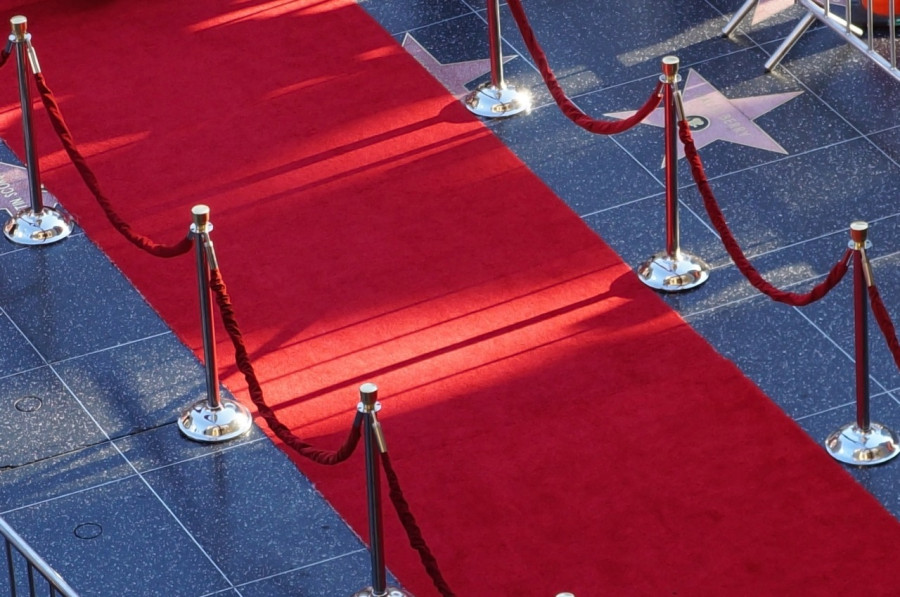Columns
Wanting to be famous
Why do we applaud the price of a painting and not the masterpiece itself?
Edyta Stępczak
'It’s an honour to be here,' said a neurosurgeon to a talk-show presenter on American television. This seemingly genuine phrase of courtesy made me reflect on today’s values. Being on TV becomes the supreme goal since it is a direct path to fame, which, in turn, leads to validation that we crave so deeply. In such a culture, also a neurosurgeon who operates on brains saving lives on a daily basis finds it an honour to be interviewed by a late-night show host, who talks in an entertaining fashion for a living.
With social media, the channels diversified. The 'likes' are an alternative source of validation that earlier could only come from appearing on television, 'likes' that people literally die for to obtain. Hundreds of people have lost their lives while trying to take the perfect selfie to post it afterwards. Death-by-selfie, as it is recognised, happened when they were posing in dangerous locations or situations: in front of incoming trains, on cliffs, in zoo enclosures and airport runways. The spread of this trend is making governments declare no-selfie zones, or run campaigns to warn about the dangers.
Accurate satire
Woody Allen’s movie To Rome with Love is an accurate satire of the phenomenon of 'famous for being famous'. Roberto Benigni plays Leopoldo who became famous out of the blue, without knowing why and how. He suddenly started to be venerated by the media and a growing number of fans, influenced and attracted by the media attention he was receiving. Allen ridicules the logic we tend to follow that whatever showcased on TV must be worth something, until it’s not, when the '15 minutes of fame' is gone, as the media shifts its focus to someone else. Fame itself is not an issue here. The difference is that, unlike before where one was justifiably famous 'for', we are now living in times where fame is detached from any solid merit, and more often than not, comes alone.
A curious case is that of Time magazine and its choice of the Person of the Year 2020—President-elect Joe Biden and Vice-President-designate Kamala Harris. One would think that the honour of becoming Person of the Year is about that, an honour, and shouldn’t be granted in advance but rather afterwards, in recognition of someone’s merit. The duo hadn’t taken office when they were given this title, and hence hadn’t done anything at this point to deserve such recognition.
The fierce race towards fame is thus only a part of this process of changing values. It also brought a dramatic impoverishment of language: All the genres shrank to one—nowadays, everything is a 'show'. Not only the obvious and original one, a reality show, but also a play in a theatre based on a classic drama, documentary, feature movie. As per current standards, political election events, town halls and conventions should aspire to be a good show as well. A candidate may lack vision and an inspiring programme, but the one thing the craving-for-entertainment electorate doesn’t forgive is being bored.
American writer and social commentator Fran Lebowitz noticed that at art auctions, people don’t applaud the paintings but the price they are sold for. When the piece of art is revealed to the attendees, the room is silent, she observed. But as soon as the auctioneer’s gavel drops closing the bidding, applause breaks out. It is, therefore, the wealth of the person who purchased it that is applauded, not the painter, sculptor or the masterpiece itself, she concluded. Owning an art collection is not only an investment, but also a symbol of status, important to people for the same reason fame is—validation. The need to matter makes people surrender to the pressure of having what is perceived as a status symbol and pursue it at almost any cost.
As author Manjushree Thapa recalls, 'Television came to Kathmandu in 1985, and the homes of the valley erected antennae on their roofs to show their neighbours that they had a TV set (even when they did not).' Some paid the ultimate price to fit in: In 1998 in Buenos Aires, Argentina, a person talking on the phone was killed by a bus while crossing the street. Many accidents of this kind are being reported nowadays. The difference is that the phone wasn’t real, it was a toy. That particular pedestrian died while pretending to be talking on his mobile phone, an object of social status at that time.
Recently, I spotted an example that goes counter to this trend of a fake, perfect, 'botoxed' life relentlessly promoted on Instagram—a label of one Spanish wine depicting the hands of an elder, wrinkled and fatigued by hard physical work. And whoever I speak to about it is absolutely loving it. Does it mean anything? Maybe that a majority of advertising agencies, caught up in the frenzy to cater to the public who bought into the artificial, idealised life, ignore the needs and taste of a segment of society that professes other values. That’s why such examples are so rare.
Ongoing discussion
There is no final conclusion here to be drawn, though. This is just one voice in an ongoing discussion on the putrefaction of values; a claim that, in all fairness, is made with regard to every single generation. Frankly, the business of arguing about worth seems worthless. People make choices as per their values, just like it happens with taste: What is valuable for some is worthless for others.
A football player is better paid than an intellectual, scientist or doctor. For the same reason, to many people, a book costing $20 seems expensive, but a $100 ticket to a football game does not. The price or salary is determined on the basis of how highly the object or the work is esteemed, which is always a reflection of the dominant values. One can try to educate people about values, but not impose them. Instead, let’s simply acknowledge the trends and engage in conversation about current values, until they get replaced by new ones.




 17.12°C Kathmandu
17.12°C Kathmandu













%20(1).jpg&w=300&height=200)

